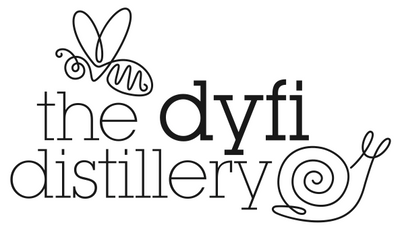I've had the privilege of knowing Bartholomew Broadbent and Gregg Perkins for many years (writes Danny), and we started chatting about making our gin available in the US market four or five years ago. Broadbent Selections is so much more than just a brilliant importer, and its been really enjoyable meeting (at least via zoom for the moment) their infectiously enthusiastic team recently.
We spent a full year refining a complex forage-led formulation, based around our existing Pollination Gin, and we couldn't be happier with the outcome. We have always favoured brightness, complexity and balance along with continuously seeking to re-define boundaries of quality and sense of place. A field of daffodils can be very pretty, but a native wildflower meadow is a thing of beauty.
I suppose we could go on about our unique approach to juniper preparation, our forage-first botanical formulations in Wales' only UNESCO Biosphere or our small but perfectly formed custom-built still, but you probably want to know how it can be best put to use!
Gin & Tonic
Pete and Mary’s preference is a simple ratio of 1 part Dyfi Gin to 3 parts tonic. If you pressed Mary, she would use Fever Tree Light. Their preferred garnish is a twist of lemon peel and a sprig of garden mint, and lots of ice. With a wide swathe of the Dyfi Valley as a backdrop outside Pete and Mary's farmhouse, its an idyllic sundowner.
If you were in Danny and Sue's cottage garden, its prepared slightly differently, with one part each of Dyfi Gin, tonic and club soda. For this method, use any good quality ’standard’ tonic water (but not a light one, as you’re using the club soda to effectively reduce the sweetness … and also reduce the quinine.). Preferred garnish is a few fresh basil leaves, and lots of ice. The backdrop in this case would be a gorgeous view over to the distillery.
Dyfi Martini
Stir 4 parts of Dyfi Gin with 1 part dry vermouth (I use a more herbal style to marry better with Pollination, such as Noilly Prat, or Dolin de Chambery Dry) through ice. The timing of the stirring is not only to chill the drink, but to tone down the alcohols slightly, to taste. Drain into a martini glass. You can squeeze or add the traditional twist of lemon, but lime is an interesting alternative. A skewered good quality green olive is an option too.
The gin and vermouth ratios can be adjusted to taste of course. I was lucky to learn Martini-making on the coat-tails of one of the world’s (then) greatest classical bartenders, Carlos of London's Café Royal back in the 1980s, when the city’s smart set would cross town just for a martini made by Carlos.
A Martini shows off Dyfi Gin's texture to the full. We get lots of lovely feedback that we make the smoothest gin many folks have ever tasted. There's a lot of work which goes into this aspect of production, not least because a Martini is one of our favourite gin-based cocktails, and its even more wonderful when its texturally pleasing.
Dyfi Negroni
Shake or stir 2 parts of Dyfi Gin, with one part of Cynar (or Campari, but Cynar gives that gorgeous green vegetal note which works very well with Dyfi Gin), and one part red vermouth (we’re spoiled for choice for vermouth these days, but something like Punt e Mes works well). Drain into a generously iced tumbler. A twist of orange is the traditional garnish, but you can try being radical and serving something like a (rinsed) pickled pepper in the glass (we have ones here called Guindilas).
This is a more gin-heavy blend than the classic one-third of each liquid approach to Negroni, but after a tip-off from the great bartender Brian Silva, it works much better if (a) the gin is particularly expressive and (b) the gin is texturally pleasing.




